| Click to recommend this page: |
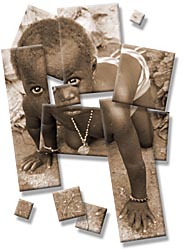
|
The wrench that's thrown into this idyllic utopia, however, is that the laws governing "freedom of the press" means that people can say (or show) whatever they like in order to persuade (or dissuade) your opinions, because the notion of "truth" cannot be so easily or succinctly defined. The task of "journalism" is to present facts and information without the subjective slant of any point of view, yet do so in a way that allows the objective observer to draw his own conclusions. Note that the word, "truth" was never used in that definition. In a society where freedom of the press exists, we expect the utmost objectivity in the organizations that report news to be fair and balanced, and from that we hope to derive truth. Of course, we all know that fair and balanced is an expression whose meaning has been laundered somewhat of late, so whether we get truth is no longer something the individual can decide, but more for the society to decide as a whole. In the end, truth is seen mostly in retrospect, after the complete story is told and the bigger picture context has been revealed and analyzed.
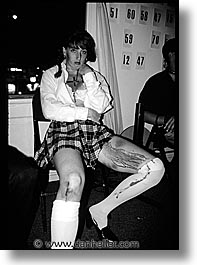
|
Ah, and "therein lies the rub," as Shakespeare would say. Does the photograph really present an objective portrayal of facts? How many ways can the image be "manipulated" so as to slant those facts? Which of those methods are ok, and which are not? Why? To examine these questions, let's compare writing with photography.
People can report the news in writing using emotionally-charged language so as to present a particular perspective. That's easy to see, of course. If a story about a particular abortion uses language like "ruthlessly killing an unborn child" instead of "terminating a fetus," it can have dramatically different perceptions by the readership. While this technique is easy to see, a subtler way to slant a story in writing might be to report only those statistics that support the editorial views of the reporter or the newspaper, rather than presenting a more complete set of numbers. Is the story lying because it's incomplete? Is it slanted if it portrays views you already believe in, or don't believe in? Who decides?
These are basic questions that any journalism major touches upon in the freshman class, but the same questions are now being applied and debated in the field of photography. In an era where digital image manipulation is getting the spotlight, the groundswell of hype and disinformation about the practice is making the question once again a hot topic for students and industry veterans alike.
A classic example is the publication of a photo of an anti-abortion rally at a medical clinic, where it appears to be well-attended, with a crowd protesters with banners and signs are keeping people from entering the clinic. Would it then be considered "lying" if it turned out that the photo was merely cropped to make it appear by exclusion of empty space that far fewer people were there than it appeared? What if the original photo also showed that the handful of people were outside the side door (a smaller entrance), and that they were oblivious to the fact that they weren't getting anyone's attention?
If the editor cropped the photo to show this, is this image manipulation? What if it was the photographer himself chose to frame the photo in such a way to give this misleading impression? Is it still a form of photo manipulation? Is it fair and balanced, or is it editorializing?
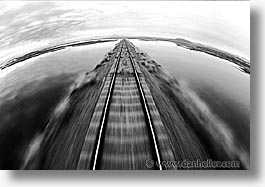
|
The point is, you can't always win in the "truth" department, and at some point, one has to draw the line as to just how "unbiased" to make a story. You can't always present both sides to a story, or you may just lose credibility yourself. Imagine how many people would be gripped to their TV to watch a debate about whether or not the Earth is round. Of course, we now see heated debates on TV all the time on subjects that would have never made it past the news department's receptionist 20 years ago. But, people love to watch people argue on TV, so these "news programs" show them now. But, I digress. My point is that people will make up their minds about what is "truth" before they get all the facts (if any), and then filter everything through that lens in order to further support their preconceived notions. Their truth and your truth are not always going to meet. Which truth is right?
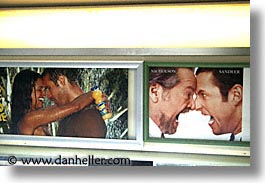
|
This leaves a lingering dilemma: is "truth" equal to "unbiased reporting?" One can tell both sides of the story and be "unbiased," but where's the "truth" in that? One would like to assume that the reader makes up his own mind about what's going on, so as to ascertain his perception of truth. If that's the case, one might argue that the job of journalism isn't necessarily to tell the truth, it's just supposed to report as much as it can so that the reader is fully informed. As you can see now, this is starting down a downward spiral of tail-chasing. Remember, our basic question is, Is photo manipulation a distortion of "truth"? We're getting to that, but as you can see, it's hard to establish what is, in fact, "truth."
Rather than try to solve the chicken-and-egg problem of "truth" and "unbiased reporting," let us instead choose organizations whose job is to establish norms by which reporters and journalists follow so as to increase the credibility of fair and balanced coverage. This follows the logic, "if we can't figure it out ourselves, let's appoint others to do it for us." (Almost sounds like Dave Barry.) Actually, this isn't such a bad idea—organizations that have been in the journalism business a long time came up with really good ideas, such as the concept of a reporter having "multiple sources" and using only "credible of witnesses." Without getting into the details of such things, it remains as much a problem with photography as it does with written journalism: who makes these decisions? Or, put more directly, who guards the guards?
Recently, photographer Patrick Schneider had three prestigious photojournalism awards rescinded because it was revealed that he'd altered images that were the bases for his prizes. (You can read the story here.) He had darkened some areas of one photo, brightened areas of another photo, and simply added contrast (adjusted both highlights and shadows) to a third. Unlike the anti-abortion examples illustrated above, where images were altered for editorial purposes, Mr. Schneider's offense was that he altered his images mostly for artistic effect. No one claimed that he'd intended to alter facts about the stories he was covering, nor was he accused of editorializing his images. He merely did it because they "looked better." This begs the new question: is artistic editing the same as editorializing? And is it therefore less offensive?
Let's take a similar example: during the O.J. Simpson trial, Time Magazine displayed a photo of Simpson altered to make him appear much darker than most pictures you see of him. Such editorialization, it was claimed, made him look "blacker," hence, making the act virtually racist in nature. Editing the image for this purpose does smell of editorialization, but what if that was how the image looked, simply because it was under-exposed? Would it then be racist or "editorializing" if the staff chose it over more conventional pictures of him (that they already had)? If you say "yes," then answer this: would it be editorializing if the staff edited the darker photo to lighten him so as to look less "black?" If you said yes to that too, you are where the rest of us are: confused about what's unbiased reporting in the photo department.
The nature of image manipulation is questionable in some cases, but the questions become muddier when the industry reacts in ways that are inconsistent with past standards. "Image processing" has been in use in newspapers for about a hundred years, since it was impossible to get a print into the newspaper without developing and processing the film in the first place. Photos that have won international media awards had been "edited" for technical aberrations, as well as for artistic effect, but, today's world of digital imaging has caused the pendulum to swing in the opposite direction. Now, any kind of editing may be cause for a photo to be "biased."
My feeling on this is not so simplistic. That is, since someone that wants to misrepresent a story, can do so without having to doctor an image, it is too simplistic to state that any image that has been doctored is now discredited. What's more, some photos must be enhanced so as to bring out detail that would otherwise not be seen, in order to present "facts" that would otherwise not be known. Imagine if someone had a photo of an unknown shooter of John F. Kennedy being shot in 1963, but it was too dark to really see the person. Should the newspaper lighten it up so as to show "the truth" about who it may be? A reasonable person would say yes, and such edited would not be considered "biased" reporting, or even editorialization. In fact, it might win an award.
To me, the matter of photo editing does not lie in the act itself, but in the end result: Why was the editing done? What did it accomplish? And what was the net effect? By judging these things on a case-by-case basis, only then can one establish the noteworthiness of any given image. But, the organization that makes these rules makes another mistake: they are trying to establish the metric by which all forms of photojournalism are judged, so as to bring credibility to the entire industry. It doesn't work that way.
The credibility of a reporter or photographer, and of the news organizations behind them, is established by their longer-term reputations that can only be established over time and by broader industry recognition. It is not established by instituting rules that don't address the realities of how individuals do their jobs. When Jayson Blair of the New York Times was found to have fabricated stories for the newspaper, the paper didn't re-establish its credibility by instituting new rules that dictated that writers could no longer use spell-checkers or word processors to write their stories. Their reputation was re-established because it was well-known to be an anomalous incident.
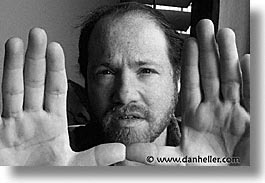
|
That is, the public should know and expect this. But they don't because the industry that the public looks to for being the watchdog for photojournalistic integrity doesn't quite get it themselves. "Alteration of an image" is one thing; lying is another. Granted, there may be a grey line, and perhaps the industry is trying to portray the most conservative face so as to appease the luddites within our culture. But in the long run, if they do not handle this well, it could make the industry itself less credible in the long run. Unless and until they administer rules that address the real issues of photographic integrity, the industry will not be perceived to be credible in its own self-policing.
Mr. Schneider's awards were withdrawn because he was found to have edited
his photos, but it's not enough to just say that. There must be a
higher degree of standards in which he violated public trust. Adjusting
an image for artistic reasons is not enough, especially in light of the
fact that this type of editing has been done since photography was used
in journalism.
Organizations that grant these awards should try not to overstep their
bounds. Of course, there should be no alteration of imagery that would
change the perception of content or how a reasonable person might perceive
the news, but the it's the integrity of the news organization itself,
and the industry within which it resides, that maintains that level of
credibility. The awarding organization's job is not to establish the
"trustworthiness" of the photographers or the news bureau they work for.
Their only job is to determine whether any given image, however it may
appear in its final published form, is worthy of the award for which it
is being considered. Over-simplistic rules are not the answer.
Click to recommend this page: